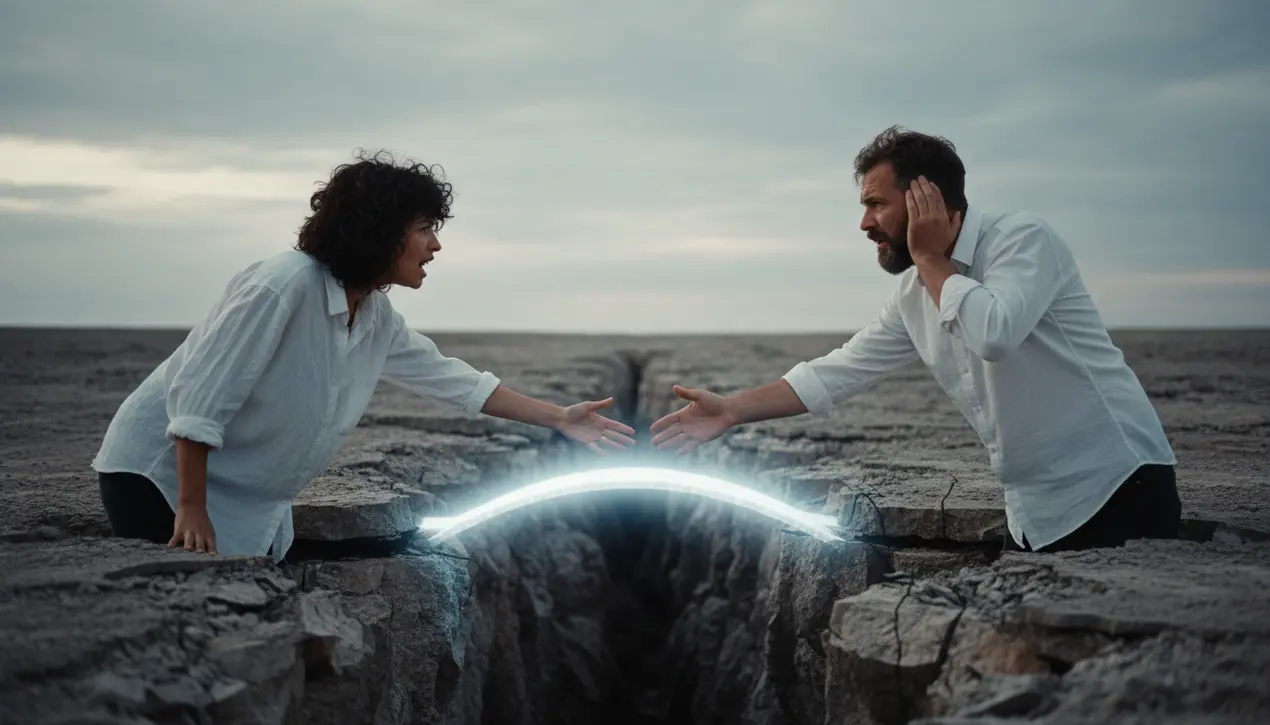
OthereducationOnline Learning
The Empathy Bridge: Mending Communication Breakdowns with Carl Rogers' Timeless Wisdom
LA
Laura Bennett
4 hours ago7 min read
It begins with a spark—an uncommon electricity between two people that makes them forget the vast chasm separating one consciousness from another. Then comes the moment of truth: they realize they are having profoundly different experiences of the same situation, suddenly left hanging from the precipice of misunderstanding.This critical juncture, where shared narratives splinter into competing realities, is where relationships are either fractured or forged anew. Consider Sarah, a teacher who described how her decade-long marriage nearly unraveled over unloading the dishwasher.To her, it represented partnership; to her husband, efficiency. Their conflict wasn't about dishes, but about whose reality would dominate their shared life.This microcosm of the human condition reveals our constant struggle: we build bridges of understanding through words and gestures, yet often find ourselves stranded on opposite banks, shouting across a river of misinterpretation. In 1951, as Cold War tensions threatened global destruction through communication failures, pioneering psychologist Carl R.Rogers addressed the Centennial Conference on Communications at Northwestern University with a revolutionary framework. Rather than focusing on debate tactics, Rogers identified our fundamental inability to truly hear one another.He observed that we typically listen not to understand, but to reply—to defend, correct, or impose our worldview onto others' experiences. Through his client-centered therapy, Rogers discovered transformative communication occurs when people feel genuinely heard and understood, not judged or analyzed.His solution was deceptively simple yet profoundly challenging: practice unconditional positive regard. This approach isn't about agreement, but about creating psychological safety through complete acceptance of another person's right to their perspective.Marriage counselors and conflict mediators consistently report how Rogers' approach transforms relationships not through compromise, but through comprehension. The breakthrough happens when we stop trying to win arguments and start trying to understand people.This requires what Rogers termed 'empathic listening'—entering another's perceptual world without judgment, seeing through their eyes, feeling with their heart. It's the psychological equivalent of stepping into someone's shoes and walking in them until the leather molds to your feet.Practical application involves paraphrasing to confirm understanding, validating emotions without necessarily agreeing with conclusions, and asking curious questions that explore rather than interrogate. Modern organizations like Google have validated that psychological safety—directly descended from Rogers' work—is the single most important factor in team effectiveness.In personal relationships, this approach can mean the difference between repeated breakdowns and breakthrough intimacy. The challenge lies in vulnerability: true listening requires temporarily suspending our own certainty to make space for another's truth.We must resist the urge to problem-solve, correct, or reassure, and instead simply be present with another human being in their experience. In our increasingly polarized world, amplified by algorithmic disagreements, Rogers' wisdom feels more urgent than ever.The next time you find yourself at that precipice, consider his proposal: lower your defenses, quiet your internal commentary, and genuinely attempt to understand the world from another's vantage point. You might discover the abyss between consciousnesses isn't nearly as wide as it appears when we build bridges of empathy instead of fortresses of certainty.
#communication
#psychology
#Carl Rogers
#relationships
#conflict resolution
#featured
Stay Informed. Act Smarter.
Get weekly highlights, major headlines, and expert insights — then put your knowledge to work in our live prediction markets.
Related News
Comments
Loading comments...
© 2025 Outpoll Service LTD. All rights reserved.